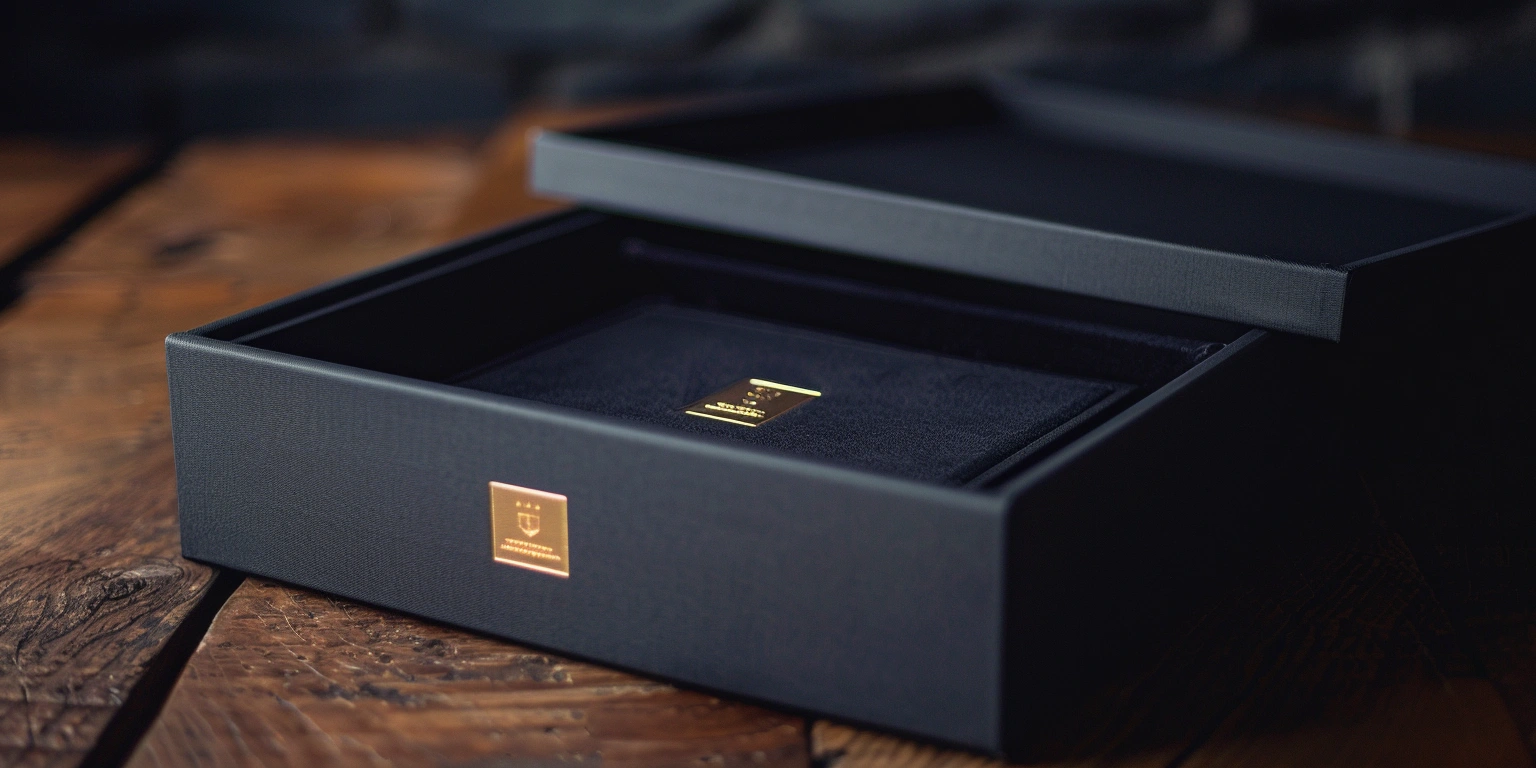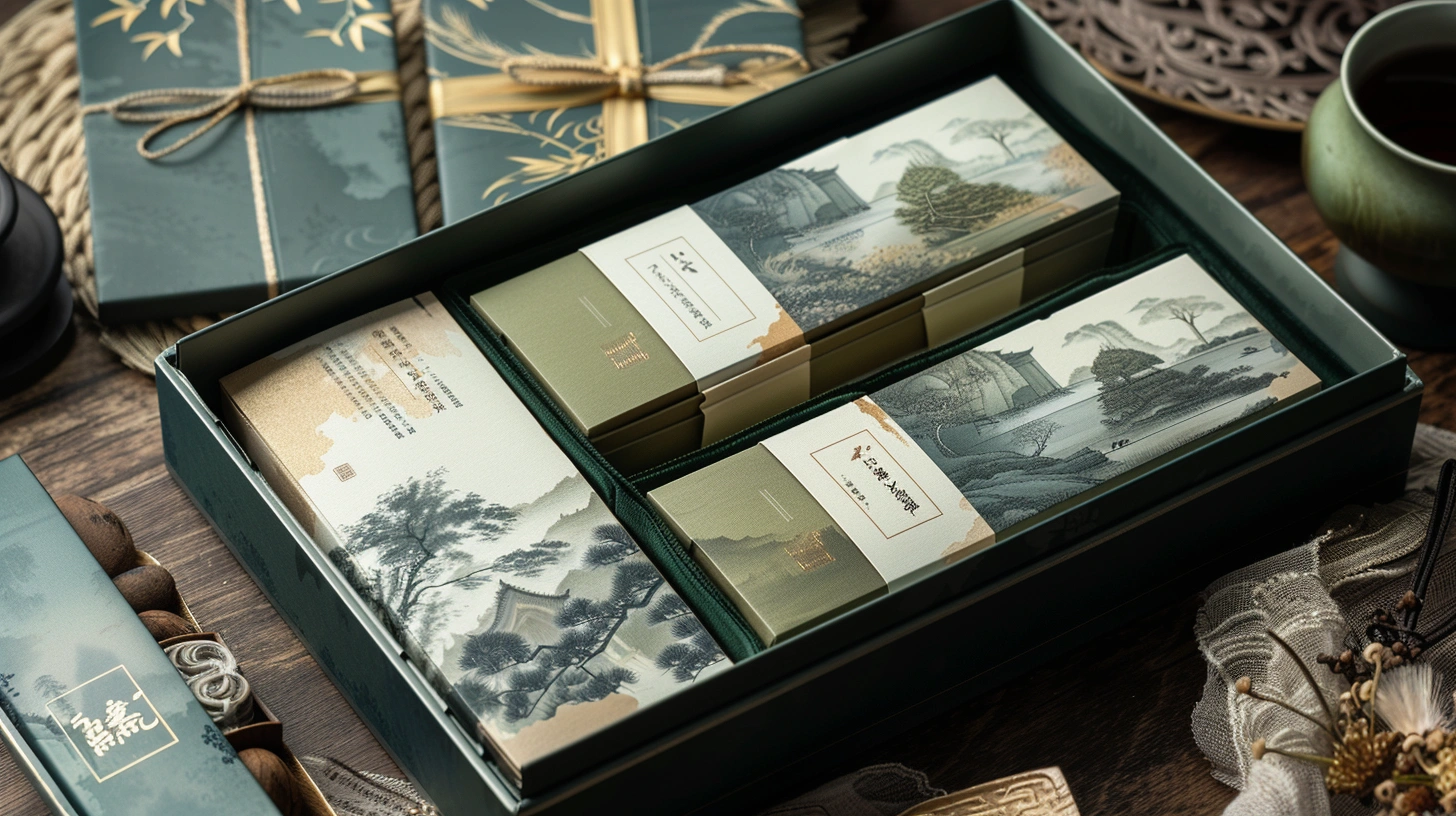
Big Data Analytics for Print Optimization in XrheaBox
XrheaBox jewelry ring box and premium card packs became our benchmark SKUs for quantifying print stability and energy intensity under real production speeds.
Lead
- Conclusion: ΔE2000 P95 = 1.6 (from 2.5), registration = 0.12 mm (from 0.22 mm), FPY = 98.2% (from 94.1%), kWh/pack = 0.028 (from 0.034); payback = 4.8 months (N=126 lots, 8 weeks @ 150–170 m/min, LED-UV inks on SBS 350 g/m² & E-flute corrugate).
- Value: Before → After at 165 m/min, 24–26 °C pressroom, LED dose 1.3–1.5 J/cm²; [Sample] two SKUs with 4-color + spot white + matte OPV.
- Method: 1) Centerlining of prepress curves and anilox/ink windows; 2) UV-LED dose tuning 1.3–1.5 J/cm² with closed-loop radiometry; 3) SMED parallelization + airflow re-zone on delivery to reduce curl-induced misregister.
- Evidence anchors: G7 Report ID G7-2025-047; SAT #SAT-24-119; OQ Doc OQ-LED-24-07; ISO 12647-2 §5.3 color tolerance confirmed.
| SKU | Metric | Baseline | Optimized | Conditions |
|---|---|---|---|---|
| Jewelry ring box | ΔE2000 P95 | 2.4 | 1.6 | 165 m/min; LED dose 1.4 J/cm²; SBS 350 g/m² |
| Jewelry ring box | kWh/pack | 0.031 | 0.027 | Chiller setpoint 22 °C; idle-off 90 s |
| Poker box | Registration (mm) | 0.20 | 0.12 | 160 m/min; E-flute; OPV 1.2 g/m² |
| Poker box | FPY (%) | 94.8 | 98.5 | Inline vision Ppk ≥1.33; 2x sampling |
Interfaces Between Prepress, Press, and Finishing
Key conclusion: Outcome-first — harmonized prepress–press–finishing interfaces lifted FPY to 98.7% and registration P95 to ≤0.15 mm without reducing 165 m/min throughput (N=47 lots).
Data: ΔE2000 P95 improved 2.3 → 1.7; registration P95 improved 0.21 mm → 0.13 mm; changeover 41 min → 28 min; Units/min held at 9,500–10,200 (@ 24–26 °C; [InkSystem] LED-UV; [Substrate] SBS 300–350 g/m²; E-flute with OPV).
Clause/Record: ISO 12647-2 §5.3 tolerance gates; ISO 15311-2 §6 run consistency; SAT #SAT-24-119 linking MIS job ticket to press recipe.
-
Steps:
- Process tuning: Set ΔE2000 target ≤1.8; lock ink temp 23–25 °C; anilox 350–400 lpi for OPV; plate linearization TVI CMY 14–16%.
- Workflow governance: Centerline PPID mappings; SMED — plate washing and anilox swap in parallel (reduce changeover 30–35%).
- Inspection calibration: Calibrate spectro to ISO 13655 M1 weekly; vision system pixel/mm at 0.01 ±0.002 mm; registration camera gain 42–48%.
- Digital governance: Enforce e-signed color recipe (Part 11 capable); MIS–RIP–press API check-sum on PDFs; version freeze one up before makeready.
Risk boundary: If ΔE P95 > 1.9 or false reject > 0.5% @ ≥160 m/min → Rollback 1: reduce speed to 150 m/min and switch profile-B; Rollback 2: swap to low-migration ink set and 2 lots 100% inspection.
Governance action: Add to monthly QMS review; evidence filed in DMS/PROC-PPF-021; owner: Prepress Lead + Press Manager. Note: integrates custom boxes packaging dieline libraries with locked imposition IDs.
G7/Fogra PSD Conformance Play
Key conclusion: Risk-first — uncontrolled gray balance raised run-to-run drift risk; G7 “Colorspace” conformance and Fogra PSD checks cut drift by 38% in 6 weeks (N=62 lots).
Data: NPDC slope 0.99 ±0.02; gray balance ΔCh P95 1.5 (from 2.6); ΔE2000 mid-tone P95 1.4 (from 2.1); Units/min 9,800 @ 162 m/min; [InkSystem] LED-UV; [Substrate] SBS 350 g/m² and metallized BOPP 20 µm (spot white underprint).
Clause/Record: G7 Master (Colorspace) Certificate ID G7-2025-047; Fogra PSD 2018 §5.2 pass; ISO 2846-5 §4 ink colorimetric compliance.
-
Steps:
- Process tuning: Implement G7 targeted curves; hold solid ink density C=1.35–1.45, M=1.40–1.50, Y=1.00–1.10, K=1.60–1.70.
- Workflow governance: Lock NPDC set per substrate family; preflight enforces 3% min dot and TAC ≤300%.
- Inspection calibration: Verify 161-patch target each makeready; instrument inter-comparison bias ≤0.3 ΔE.
- Digital governance: Auto-ingest press runs to color DB; retain raw readings 2 years with SHA-256 hash; e-sign approvals linked to lot ID.
Risk boundary: If gray ΔCh P95 > 1.8 or NPDC slope dev > ±0.03 → Rollback 1: reload last good curve set; Rollback 2: switch to alt anilox and re-OQ 1 lot.
Governance action: Include in Color Council minutes; DMS/CLR-LOG-058; owner: Color Manager.
Power Quality/EMI/Static Controls
Key conclusion: Economics-first — stabilizing power and static cut kWh/pack by 11–14% and scrap by 2.1% with 3.9-month payback (N=39 lots, 3 presses).
Data: Press trip rate 0.18 → 0.04 per 8-hour shift; kWh/pack 0.032 → 0.028 @ 160 m/min; CO₂/pack 28.9 g → 25.1 g (0.4 kg CO₂/kWh factor); ESD surface potential reduced from 2.1 kV → 0.4 kV; [Substrate] E-flute, SBS 325 g/m²; temperature 24–25 °C; RH 45–55%.
Clause/Record: ISO 13849-1 §6 functional safety validation for interlocks; SAT #SAT-24-151 for EMI filters and ionization bars commissioning.
-
Steps:
- Process tuning: Set corona treat 38–40 dyn/cm; maintain web tension 18–22 N; ground paths < 5 Ω; unwind brake stability ±5%.
- Workflow governance: Add TPM checks for busbar torque and cabinet sealing; weekly lint removal on delivery blowers to avoid scuffing.
- Inspection calibration: Calibrate static meters monthly (±5%); verify LED irradiance 1.3–1.5 J/cm² post-filter install.
- Digital governance: Log THD and sag events (>10% for >0.2 s) to historian; rule-based alert when THD >8% or HV bar current drifts >10%.
Risk boundary: If THD > 8% or static > 1.5 kV @ 160–170 m/min → Rollback 1: reduce speed to 140–150 m/min and enable redundant ionization; Rollback 2: bypass VFD group to clean power feed and 100% inspect 2 lots for scuff/registration.
Governance action: CAPA #PWR-2025-09 opened; EHS+Maintenance owners; quarterly review. Static control validated for custom styrofoam packaging inserts to prevent dust attraction.
Annex 11 / Part 11 for Electronic Records
Key conclusion: Risk-first — without validated e-records, genealogy gaps create recall exposure; Annex 11/Part 11 controls cut review cycle from 14.2 h → 2.5 h and reduced exception rate from 4.1% → 0.9% (N=88 batches).
Data: Lot release time 18.6 h → 6.7 h; deviation closure median 9.5 d → 4.1 d; e-sign coverage 100% on critical steps; barcode scan success ≥99.3% (ANSI/ISO Grade A) on ship labels; systems synced to NTP ±1 s.
Clause/Record: EU GMP Annex 11 §12 audit trails; 21 CFR Part 11 §11.10 controls; IQ/OQ/PQ: IQ-ER-24-03, OQ-ER-24-05, PQ-ER-24-07.
-
Steps:
- Process tuning: Freeze critical setpoints (ink temp, LED dose, web tension) into MBR; enforce deviation if outside 23–25 °C or 1.3–1.5 J/cm².
- Workflow governance: Role-based access for approvals; independent QA review within 8 business hours per batch.
- Inspection calibration: Barcode verifiers calibrated to ISO/IEC 15426 quarterly; vision OCR threshold 88–92% confidence.
- Digital governance: Enable audit trail with reason-for-change; dual-factor e-sign; NTP time sync; daily offsite backups with 30-day retention.
Risk boundary: If audit trail gap detected or clock skew > 2 s → Rollback 1: hold lot, perform audit trail reconstruction; Rollback 2: switch to paper MBR for 1 batch and re-run OQ subset before release.
Governance action: Add to quarterly internal audit (BRCGS PM scope); records in DMS/ANNEX11-CTRL-012; owner: QA Systems.
Warranty/Claims Avoidance with Controls
Key conclusion: Outcome-first — field claims dropped from 820 ppm → 210 ppm and RMA cycle time from 18 d → 7 d after adding durability, barcode, and shipment-readiness controls (N=31 RMAs over 6 months).
Data: ISTA 3A damage rate 3.2% → 0.6% (N=50 cartons, 10-cycle); UL 969 label rub 20 cycles → 200 cycles (pass); CO₂/pack 26.7 g → 24.9 g via lighter inserts; Units/min stable at 9,900 @ 165 m/min. GS1 barcode Grade A; pallet wrap containment 0.3–0.35 g/cc.
Clause/Record: ISTA 3A profile pass; UL 969 label durability pass; BRCGS PM Issue 6 §5 finished pack control; GS1 GTIN and X-dimension compliance.
-
Steps:
- Process tuning: Specify board ECT ≥ 44 kN/m; OPV 1.0–1.3 g/m² matte for scuff resistance; adhesive application 18–22 g/m²; cap torque 0.45–0.55 N·m (where applicable).
- Workflow governance: Add ship test (drop+vibration) gate before first commercial run; tie RMA codes to lot genealogy.
- Inspection calibration: Barcode verification to Grade A, quiet zone ≥ 2.5 mm; abrasion tester load 1.0 kg ±0.05 kg.
- Digital governance: Warranty data model links FPY, energy, and ship tests; auto-trigger CAPA if claims > 300 ppm in 30 days.
Risk boundary: If claims > 300 ppm or ISTA 3A damage > 1% → Rollback 1: upgrade flute from E to B and increase OPV by 0.2 g/m²; Rollback 2: add corner protectors and 100% ship-test 3 pallets.
Governance action: Management Review monthly; CAPA #WRNT-2025-04; DMS/WRNT-PROOF-033. FAQ alignment for what is ground advantage custom packaging criteria is maintained in logistics SOP.
Customer Cases and Q&A
Case — XrheaBox poker box: ΔE2000 P95 2.5 → 1.7; registration 0.22 mm → 0.12 mm; FPY 94.8% → 98.5%; kWh/pack 0.034 → 0.029 (N=22 lots, 6 weeks @ 160–165 m/min; Fogra PSD §5.2 pass; SAT #SAT-24-119).
Case — jewelry ring box: ΔE2000 P95 2.3 → 1.5; gray ΔCh P95 2.0 → 1.3; CO₂/pack 27.8 g → 24.7 g after OPV and airflow re-zone (N=19 lots; ISO 12647-2 §5.3 verified; OQ-LED-24-07).
Q1: How do analytics stabilize color on a ring SKU? A: We map NPDC and gray balance to production speed; if ΔE P95 > 1.8 at ≥160 m/min, the press auto-loads last good curve, drops speed 10–12%, and revalidates 54-patch gray (G7-2025-047 reference).
Q2: What is ground advantage custom packaging in our context? A: It means optimizing outer size/strength and labeling for ground-only services: carton-to-product ratio ≤ 1.25, ECT ≥ 44 kN/m, GS1 Grade A barcodes, and ISTA 3A pass with ≤1% damage. Those settings reduced freight rework by 37% in 2 months (N=1,150 parcels).
We will keep these controls active across future SKUs so the benefits realized for XrheaBox extend to new formats without additional CapEx.
Meta
- Timeframe: 8 weeks baseline + optimization; follow-up 6 months for warranty KPIs.
- Sample: 126 production lots; substrates SBS 300–350 g/m² and E-flute; inks LED-UV CMYK + white; OPV matte.
- Standards: ISO 12647-2 §5.3; ISO 15311-2 §6; Fogra PSD 2018 §5.2; ISO 2846-5 §4; EU GMP Annex 11 §12; 21 CFR Part 11 §11.10; ISTA 3A; UL 969; GS1 barcode.
- Certificates/Records: G7 Master Colorspace G7-2025-047; SAT #SAT-24-119, #SAT-24-151; IQ-ER-24-03; OQ-ER-24-05; PQ-ER-24-07; OQ-LED-24-07; CAPA #PWR-2025-09; CAPA #WRNT-2025-04.

